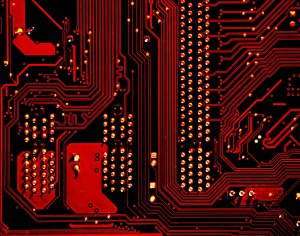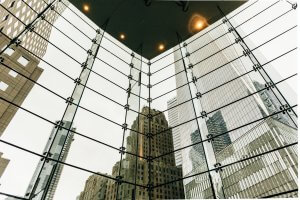- Financial services
- Private Equity
- Financial services
- Media arts and culture

Longer Reads
Is Blockchain technology set to revolutionise the art market?
Valentina Falicheva explains how and why Blockchain is applicable to the art market
3 minute read
Published 17 October 2018
Key information
- Specialisms
- Business
- Private Wealth
- Services
- Financial services
- Private Equity
- Sectors
- Financial services
- Media arts and culture
A notable trend since Bitcoin gained its popularity has been an incredible rise in the interest in the technology behind Bitcoin known as Blockchain, which is the “thing” which allows cryptocurrencies to function. Some statistics indicate that the global blockchain market is expected to be worth $20 billion in 2024! In this article, we consider what it is that makes blockchain unique, as well as demystifying some myths around it, with a particular focus on how this technology is applicable to the art market.
What is Blockchain and why is it revolutionary?
In a nutshell, a blockchain is based on a distributed ledger technology that acts as a database on which transactions are permanently recorded. The first blockchain was created by Satoshi Nakamoto as a means to record transactions in the cyptocurrency Bitcoin. The aim behind it was to create a virtual currency which cannot be forged and is not controlled by any bank or government. One of the main benefits of blockchain technology is that it does not use a central server to store information but instead the recorded information embedded in a digital code instantly appears on a vast network of shared databases. As the information is held so widely, it means that an outsider would need to corrupt more than 51% of nodes to interfere with it. This highly secure method of recording and storing information protects it from being deleted or tampered with. Such immutable record-keeping properties of blockchain could revolutionise the art market by improving transparency, ownership and copyright issues. It is worth noting that Christie’s Art+Tech summit held on 17 July 2018 focussed on blockchain and weighed its pros and cons which in itself is an indication of the technology’s significance in the art world.
How Blockchain is applicable to the art market?
The art world has already demonstrated some fascinating applications of blockchain technology with such creative and incredibly popular project as the Scarab Experiment, which allows users to submit their piece of art in return for a Scarab token. It then applies artificial intelligence to create a single work of art from one thousand submissions. Another example is “CryptoKitties” which are collectible cartoon cats that you can buy, sell and breed! This project has been reported to have raised around $12 million.
It is well known that artists struggle with publishing their content on the internet due to piracy which diminishes the value of any creative product that has been distributed on the internet for free. Blockchain technology provides a tool which solves the ownership and value issues for digital art by retaining the artist’s control over how many copies of the same piece of art they would like to issue which in turn helps retain the value of the work of art. The absence of costly middlemen also motivates digital art to grow.
In terms of the physical pieces of art, blockchain provides the opportunity to create an industry wide registry containing catalogue details, provenance records, certificates of authenticity and sale prices which could be very beneficial to the art industry. There are benefits if ownership of a work of art can be tracked and its characteristics, together with any sale prices can be permanently and securely recorded. Blockchain therefore has the potential to drastically reduce fraud, provide a secure system for verification of authenticity and provenance, as well as allowing the artists to claim resale right royalties through tracking the sales of their works. The new technology also has the capacity to drastically reduce transaction costs. All of this should certainly boost trust and create the potential to attract new customers who previously would have been wary of buying art works due to the lack of knowledge.
Another area which can attract new customers who wish to invest in art is a fractional ownership or tokenisation which allows individuals to buy a part of a work of art and trade it. When it comes to trading, a buzz term that is linked to blockchain is “smart contracts”. In simple terms, these are the contracts or rather computer programmes which embed the terms of the agreement between buyer and seller written directly into the computer code. Smart contracts are self-executing and have the potential to be used worldwide in various sectors ranging from banking to real estate. For example, it was reported in September last year that a TechCrunch founder, Michael Arrington, used the Ethereum blockchain platform to purchase a house in Kiev, Ukraine. The transaction was facilitated by a decentralised real estate platform known as Propy and was settled entirely via smart contracts[1]. In addition, the latest news headlines announced that the Dubai International Financial Center aims to employ a network based on blockchain and smart contracts to allow different courts to share information in a decentralized manner. Within the art market, a smart payment platform could help streamline the transaction between artists and collectors.
Are there any concerns?
Although blockchain offers a lot of benefits, it is not a magic wand. Any database, including one based on blockchain technology is only as good as the information recorded in it. This means that any transaction and all the information about a work of art that goes into the blockchain must be verified before it has been recorded. For example, it has been reported in the media that in June 2018, a tech person registered himself as the owner of Leonardo Da Vinci’s Mona Lisa on one of the blockchains! Obviously, any type of risk must be dealt with.
Secondly, with blockchain popularity being on the rise over the past years we now have countless blockchains. The art world presently mostly makes use of the Ethereum blockchain platform. However, the main issue is that the various protocols are not interconnected and we assume that it will take some time to see if only a few players will dominate the art market in terms of providing art registries. Also, Ethereum processes a relevantly small number of transactions per second compared with newer protocols such as Dash or EOS.
Another problem is how to verify that a particular piece of art is the piece which is registered on blockchain. This issue is being considered by various market players and one of the solutions currently being used is placing a tag such as a QR code at the back of a piece of art and then issuing its own digital passport linked to the work’s blockchain record.
Blockchain will undoubtedly have an impact on the art market. We will have to wait and see to what extent.
————————————————————–
[1] https://themarketmogul.com/smart-contracts-disrupting-real-estate/
Related content
Longer Reads
Is Blockchain technology set to revolutionise the art market?
Valentina Falicheva explains how and why Blockchain is applicable to the art market
Published 17 October 2018
Associated sectors / services
A notable trend since Bitcoin gained its popularity has been an incredible rise in the interest in the technology behind Bitcoin known as Blockchain, which is the “thing” which allows cryptocurrencies to function. Some statistics indicate that the global blockchain market is expected to be worth $20 billion in 2024! In this article, we consider what it is that makes blockchain unique, as well as demystifying some myths around it, with a particular focus on how this technology is applicable to the art market.
What is Blockchain and why is it revolutionary?
In a nutshell, a blockchain is based on a distributed ledger technology that acts as a database on which transactions are permanently recorded. The first blockchain was created by Satoshi Nakamoto as a means to record transactions in the cyptocurrency Bitcoin. The aim behind it was to create a virtual currency which cannot be forged and is not controlled by any bank or government. One of the main benefits of blockchain technology is that it does not use a central server to store information but instead the recorded information embedded in a digital code instantly appears on a vast network of shared databases. As the information is held so widely, it means that an outsider would need to corrupt more than 51% of nodes to interfere with it. This highly secure method of recording and storing information protects it from being deleted or tampered with. Such immutable record-keeping properties of blockchain could revolutionise the art market by improving transparency, ownership and copyright issues. It is worth noting that Christie’s Art+Tech summit held on 17 July 2018 focussed on blockchain and weighed its pros and cons which in itself is an indication of the technology’s significance in the art world.
How Blockchain is applicable to the art market?
The art world has already demonstrated some fascinating applications of blockchain technology with such creative and incredibly popular project as the Scarab Experiment, which allows users to submit their piece of art in return for a Scarab token. It then applies artificial intelligence to create a single work of art from one thousand submissions. Another example is “CryptoKitties” which are collectible cartoon cats that you can buy, sell and breed! This project has been reported to have raised around $12 million.
It is well known that artists struggle with publishing their content on the internet due to piracy which diminishes the value of any creative product that has been distributed on the internet for free. Blockchain technology provides a tool which solves the ownership and value issues for digital art by retaining the artist’s control over how many copies of the same piece of art they would like to issue which in turn helps retain the value of the work of art. The absence of costly middlemen also motivates digital art to grow.
In terms of the physical pieces of art, blockchain provides the opportunity to create an industry wide registry containing catalogue details, provenance records, certificates of authenticity and sale prices which could be very beneficial to the art industry. There are benefits if ownership of a work of art can be tracked and its characteristics, together with any sale prices can be permanently and securely recorded. Blockchain therefore has the potential to drastically reduce fraud, provide a secure system for verification of authenticity and provenance, as well as allowing the artists to claim resale right royalties through tracking the sales of their works. The new technology also has the capacity to drastically reduce transaction costs. All of this should certainly boost trust and create the potential to attract new customers who previously would have been wary of buying art works due to the lack of knowledge.
Another area which can attract new customers who wish to invest in art is a fractional ownership or tokenisation which allows individuals to buy a part of a work of art and trade it. When it comes to trading, a buzz term that is linked to blockchain is “smart contracts”. In simple terms, these are the contracts or rather computer programmes which embed the terms of the agreement between buyer and seller written directly into the computer code. Smart contracts are self-executing and have the potential to be used worldwide in various sectors ranging from banking to real estate. For example, it was reported in September last year that a TechCrunch founder, Michael Arrington, used the Ethereum blockchain platform to purchase a house in Kiev, Ukraine. The transaction was facilitated by a decentralised real estate platform known as Propy and was settled entirely via smart contracts[1]. In addition, the latest news headlines announced that the Dubai International Financial Center aims to employ a network based on blockchain and smart contracts to allow different courts to share information in a decentralized manner. Within the art market, a smart payment platform could help streamline the transaction between artists and collectors.
Are there any concerns?
Although blockchain offers a lot of benefits, it is not a magic wand. Any database, including one based on blockchain technology is only as good as the information recorded in it. This means that any transaction and all the information about a work of art that goes into the blockchain must be verified before it has been recorded. For example, it has been reported in the media that in June 2018, a tech person registered himself as the owner of Leonardo Da Vinci’s Mona Lisa on one of the blockchains! Obviously, any type of risk must be dealt with.
Secondly, with blockchain popularity being on the rise over the past years we now have countless blockchains. The art world presently mostly makes use of the Ethereum blockchain platform. However, the main issue is that the various protocols are not interconnected and we assume that it will take some time to see if only a few players will dominate the art market in terms of providing art registries. Also, Ethereum processes a relevantly small number of transactions per second compared with newer protocols such as Dash or EOS.
Another problem is how to verify that a particular piece of art is the piece which is registered on blockchain. This issue is being considered by various market players and one of the solutions currently being used is placing a tag such as a QR code at the back of a piece of art and then issuing its own digital passport linked to the work’s blockchain record.
Blockchain will undoubtedly have an impact on the art market. We will have to wait and see to what extent.
————————————————————–
[1] https://themarketmogul.com/smart-contracts-disrupting-real-estate/
Associated sectors / services
- Financial services
- Private Equity
- Financial services
- Media arts and culture
Need some more information? Make an enquiry below.
Enjoy reading our articles? why not subscribe to notifications so you’ll never miss one?
Subscribe to our articlesMessage us on WhatsApp (calling not available)
Please note that Collyer Bristow provides this service during office hours for general information and enquiries only and that no legal or other professional advice will be provided over the WhatsApp platform. Please also note that if you choose to use this platform your personal data is likely to be processed outside the UK and EEA, including in the US. Appropriate legal or other professional opinion should be taken before taking or omitting to take any action in respect of any specific problem. Collyer Bristow LLP accepts no liability for any loss or damage which may arise from reliance on information provided. All information will be deleted immediately upon completion of a conversation.
Close




















































